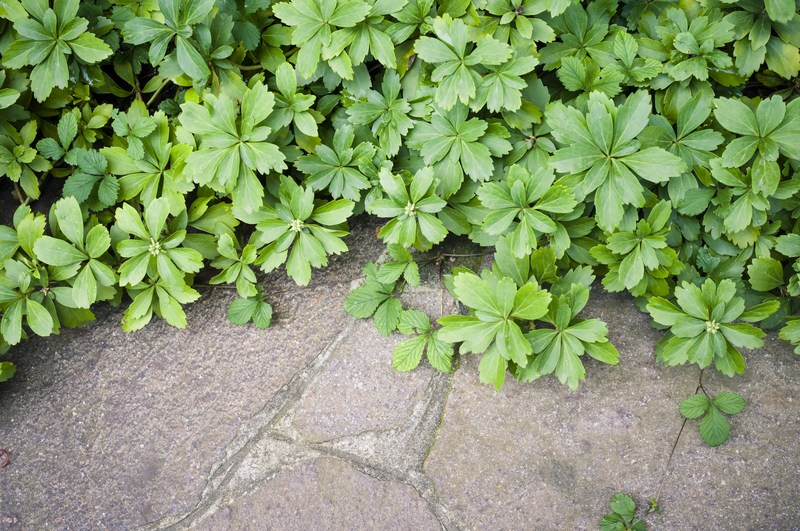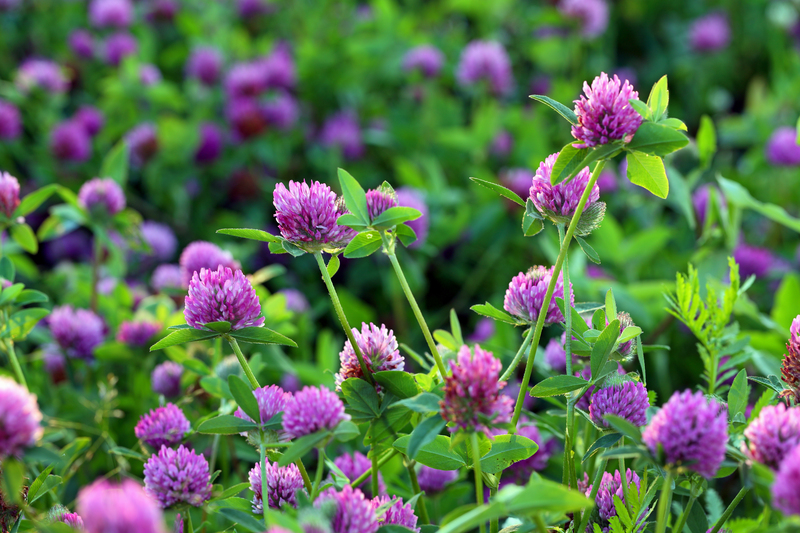How to Design Practical and Attractive Seating Areas for Gardens
Posted on 23/08/2025
How to Design Practical and Attractive Seating Areas for Gardens
Garden seating areas have become the heart of every outdoor retreat, where homeowners and guests can relax, entertain, and immerse themselves in nature's beauty. This comprehensive guide covers how to design practical and attractive seating areas for gardens, balancing comfort with visual appeal. Whether you have a compact city backyard or an expansive country garden, discover actionable tips, inspiring ideas, and expert advice to help you create a welcoming garden seating area adaptable to every style and size.
Why Invest in a Practical & Beautiful Garden Seating Area?
A well-designed seating spot transforms your outdoor space into a true extension of your home. By combining functionality with aesthetic charm, you:
- Maximize your use of outdoor space throughout the year
- Create zones for relaxation, dining, and entertainment
- Enhance your property's value and curb appeal
- Promote well-being with time spent outdoors
- Forge stronger connections with family and friends
In this article, we'll show you how to craft both practical and visually attractive garden seating areas, addressing layout, materials, comfort, and decorative touches.

Planning Your Garden Seating Area
1. Assess Your Garden Space
Start by carefully evaluating your garden's size, shape, and features. Take measurements and consider any natural elements such as slopes, mature trees, or water features. It's important to know:
- How much space is available for seating
- Where the sun rises and sets for optimal light or shade
- Potential privacy concerns from neighbors
2. Define Your Purpose
Ask yourself questions like:
- How will the seating area be used? (Eg. Reading, BBQs, kids' play, parties, quiet reflection)
- How many people should it accommodate?
- Do you prefer flexible layouts or fixed arrangements?
Clarifying the primary function helps inform your layout, furniture selection, and garden seating design.
Choosing the Right Location
A well-positioned garden seating area maximizes comfort and atmosphere. Here are some expert considerations:
- Sun and Shade: Place seating to capture morning or evening sun, or nestle under established trees or pergolas for shade.
- Views: Orient seats toward the most attractive vista--flower beds, lawns, ponds, or distant landscapes.
- Accessibility: Place seating within easy reach of entrances, paths, or the kitchen for convenience.
- Privacy: Use fences, hedges, screens, or strategic plantings to shield your seating area from overlooked spots.
Selecting Practical and Attractive Garden Furniture
Material Matters
Modern garden seating options range from classic benches to modular sofas. When selecting outdoor furniture for gardens:
- Teak, cedar, and eucalyptus: Hard-wearing woods bring warmth and natural character, weathering beautifully if well-maintained.
- Metal (aluminum, wrought iron): Sleek lines, strength, and durability. Look for powder-coated finishes for rust resistance.
- All-weather wicker: Lightweight and stylish synthetic rattan stands up to rain and sun.
- Stone or concrete: Robust, low-maintenance choices for built-in solutions like benches or retaining walls.
- Recycled/reclaimed materials: Pallets, railroad ties, and salvaged wood offer unique, eco-friendly seating options.
Comfort and Functionality
Comfort is key to making your garden seating inviting. Consider:
- Deep cushions and weather-resistant upholstery
- Ergonomically shaped chairs or benches
- Moveable pouffes or stools for flexibility
- Tables at the right height for drinks and plates
Built-in Versus Freestanding Seating
- Built-in seating: Custom-designed benches along retaining walls, raised beds, or deck edges efficiently maximize space and unify design. Perfect for small gardens or modern, minimalist landscaping.
- Freestanding furniture: Offers flexibility--reposition as needed for sun, shade, or different gatherings. Ideal if you like to move things seasonally.
Layout and Arrangement Tips for Garden Seating
Focal Points and Flow
Garden seating areas should complement the overall landscape design, not compete with it. To enhance functionality and beauty:
- Create focal points: Place seating where it faces a water feature, statement plant, or sculpture.
- Encourage movement: Avoid blocking pathways; use curved lines or stepping stones to invite exploration.
- Vary levels: Sunken patios, raised decks, or terraced seating add interest and define separate zones.
Option for Multiple Garden Seating Areas
Large gardens benefit from multiple seating spaces. For instance:
- A sunny breakfast nook near the kitchen
- A shaded reading corner beneath trees
- A formal dining patio for entertaining
- A fire pit area for evening warmth and ambiance
This zoning approach caters to different moods and activities, making your garden more dynamic and practical.
Enhancing Garden Seating with Planting and Greenery
Integrating Plants into Your Design
Plants can frame, soften, and add color to any seating area. For a harmonious, attractive outcome:
- Border plants: Use scented herbs, low-growing flowers, or ornamental grasses around edges for texture and fragrance.
- Vertical gardens: Train climbers like jasmine, clematis, or roses over pergolas, trellises, or arches for privacy and shade.
- Container gardening: Potted trees, shrubs, or annuals are perfect if your seating area sits on hard landscaping.
- Seasonal interest: Mix evergreens with perennials to ensure year-round beauty.
Wildlife and Biodiversity Benefits
Thoughtful planting supports pollinators and small wildlife. Butterflies and birds liven up your seating area, making it more enjoyable and sustainable.
Adding Shade, Shelter, and Lighting
Shade Solutions for Comfort and Style
To ensure your garden seating area is usable in all weather, incorporate:
- Pergolas, gazebos, or arbours: Permanent structures for climbing plants and romance
- Umbrellas and parasols: Moveable, simple solutions for sun protection
- Sails or awnings: Modern, sleek shading with flexible positioning
- Mature trees: Nature's canopy for dappled shade and cool air
Weatherproofing and Shelter
Enjoy your garden seating areas year-round by including:
- Retractable roofs or side screens to block wind and rain
- Waterproof covers for soft furnishings
- Portable patio heaters or fire pits for chilly evenings
Lighting for Ambience and Safety
A beautiful seating area shines after sunset. Boost atmosphere and safety with:
- Solar-powered path lights or spotlights to highlight features
- Bistro or string lights for a magical nighttime effect
- Lanterns and candles for romantic, gentle illumination
- Motion-sensor lights for entrances and steps
Accessorizing for Comfort and Personality
Add Layers of Texture and Color
Soft furnishings instantly elevate the coziness of garden seating:
- Waterproof cushions in bright or soothing hues
- Throw blankets for cooler days
- Outdoor rugs to define your seating space and introduce pattern
Incorporate Personal Touches
Make your garden seating area unique with:
- Decorative pots and planters
- Quirky garden sculptures or wind chimes
- Side tables for books, drinks, or lanterns
- Artful wall hangings or mirrors for enclosed spaces
Trendy Ideas to Inspire Your Garden Seating Design
- Fire Pit Lounges: Arrange sofas or benches in a circle around a central fire pit for warmth and gathering appeal.
- Moroccan Courtyard: Use low sofas, patterned tiles, and lanterns to create an exotic, relaxed vibe.
- Naturalistic Retreat: Carve benches into gentle slopes or under tree canopies for an immersive forest feel.
- Minimalist Modern: Keep lines clean with concrete or hardwood benches, geometric planters, and monochrome textiles.
- Family Zones: Combine picnic tables, swings, and hammocks to create kid-friendly, playful corners.
Maintenance and Durability Considerations
Weatherproof Materials
Choose outdoor seating materials designed to withstand your local climate. Teak, stainless steel, and high-grade resin are all known for their longevity. Always look for UV-resistant, washable fabrics.
Regular Care Tips
To keep your garden seating area attractive:
- Wash cushions and covers seasonally
- Oil wooden furniture once or twice a year
- Check metal furniture for rust and repaint as needed
- Store lightweight items during storms or winter
Eco-Friendly and Sustainable Garden Seating
For a greener approach, consider:
- Refurbishing or repurposing old furniture for new outdoor use
- Using locally sourced or recycled materials to reduce your carbon footprint
- Selecting FSC-certified woods
- Incorporating natural shade via trees and living roofs or walls

Conclusion: Enjoying Your Practical and Attractive Garden Seating Area
Designing practical and attractive garden seating areas can elevate your outdoor living experience, turning unused space into a cherished extension of your home. By carefully planning the layout, investing in quality furniture, leveraging plantings for shade and privacy, and adding unique accessories, you create both beauty and comfort.
Remember to tailor the design to your lifestyle and regularly maintain your seating area, ensuring it remains a welcoming retreat for years to come. With thoughtful design, your garden will become the ultimate destination for relaxation, gathering, and enjoying the outdoors in every season.
Frequently Asked Questions
- What is the best material for weatherproof garden seating?
Teak, powder-coated metal, and high-quality synthetic rattan are all top choices for resilience to sun, rain, and fluctuating temperatures. - How can I make a small garden seating area more appealing?
Use built-in benches, vertical planters, mirrors to reflect light, and compact bistro sets to make small spaces feel inviting and uncluttered. - How do I improve privacy in a garden seating zone?
Add tall planters, trellises with climbers, decorative screens, or dense hedges to shield your seating area from view. - What lighting works best for garden seating?
Mix solar stake lights, fairy or string lights, lanterns, and spotlights for ambient, task, and safety lighting after dark. - Can I create a garden seating area on a budget?
Absolutely! Repurpose old wooden pallets, use DIY concrete blocks, or refurbish existing furniture for a unique, cost-effective solution.
By following the expert tips in this guide, you'll soon discover how to create a garden seating area that is beautiful, comfortable, and fully tailored to your lifestyle--making your outdoor space a true sanctuary.

